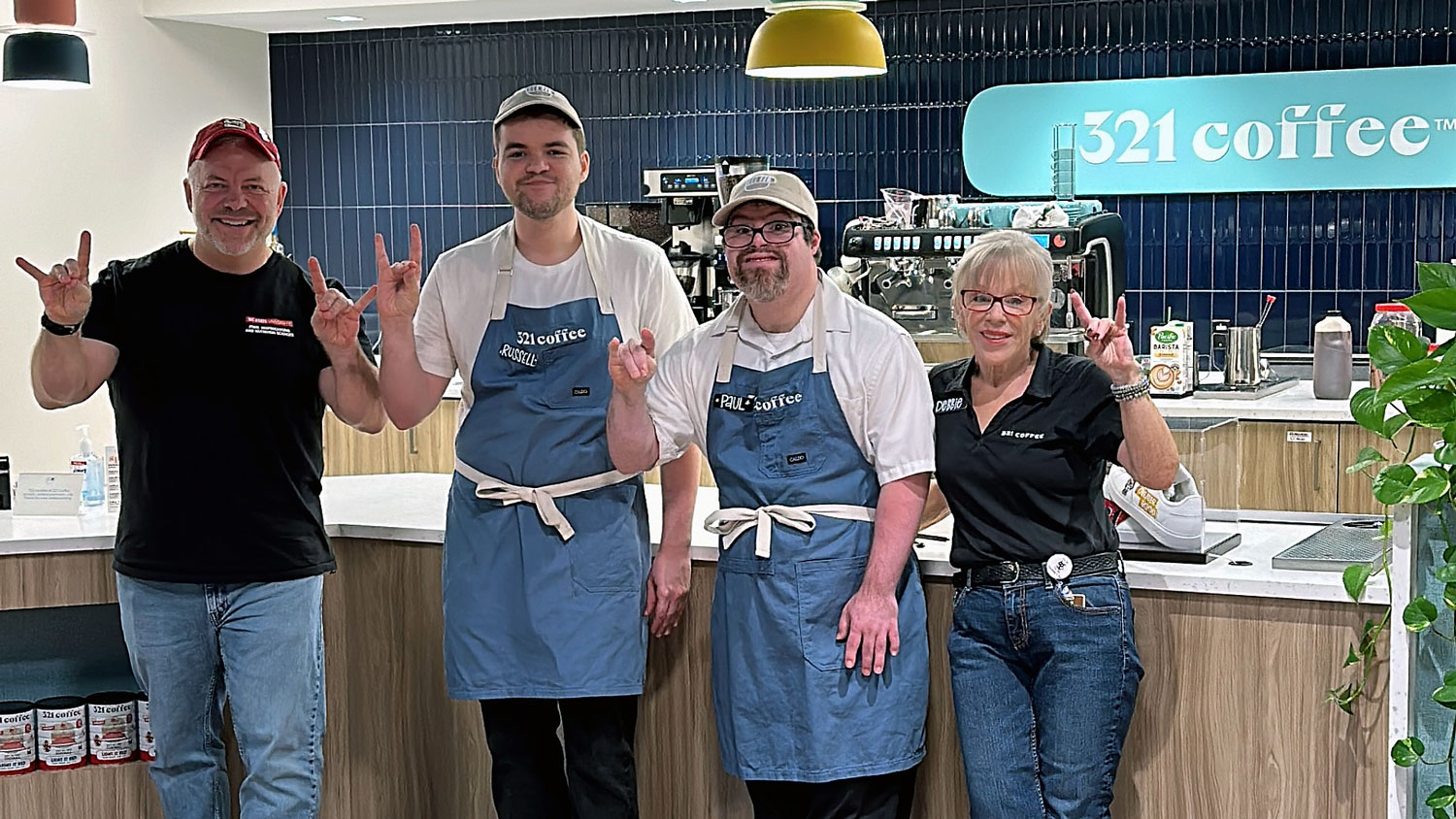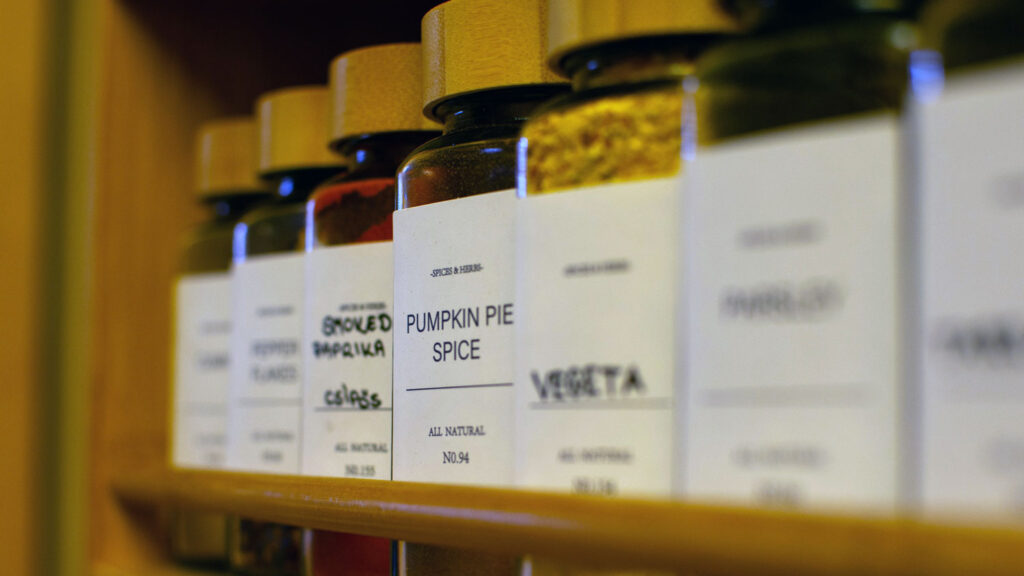A Food Scientist Breaks Down the Pumpkin Spice Phenomenon

Weeks before fall officially begins, the aroma of pumpkin spice swirls in the air outside coffee shops. But for fans of this fragrant blend of caffeine and spices, it’s never too early to celebrate autumn.
For help tracing the origins of pumpkin spice and how this ubiquitous flavor made its way from hot beverages into foods of all kinds, we consulted Gabriel Keith Harris, an NC State University food science professor and coffee researcher. Harris studies how food processing affects the health properties of foods. He teaches classes in food chemistry, processing and analysis in NC State’s Department of Food, Bioprocessing and Nutrition Sciences, where he’s co-director of undergraduate food science programs.
Pumpkin spice season seems to arrive earlier every year. How long ago did pumpkin spice flavors get their start?
The spices that we often associate with pumpkins and pumpkin pie — and much later with this pumpkin spice latte that I’m sipping right now — were first put together in the 1600s, when those spices were united. Soon after the first supermarkets opened in the U.S., McCormick came out with a pumpkin spice flavor in 1934 as an easy way to incorporate all these ingredients together as a mix. Those ingredients typically are going to be cinnamon, nutmeg and ginger, cloves, and sometimes allspice. There’s no pumpkin in there, but those are the pumpkin-related spices that are often put together. At that point McCormick was saying, try this mix in pumpkin bread and pumpkin pie, obviously. And since we’re in North Carolina, traditional sweet potato pie recipes often follow similar recipes and use similar pumpkin spice mixes.

How did pumpkin spices move from foods like pumpkin pie or sweet potato pie into coffee?
It’s hard to know how much of this is apocryphal and how much of it is true, but in 2003, Starbucks apparently wanted to create coffee beverages which would rival the ones that they had been selling during Christmastime: eggnog and mocha mint and other sorts of holiday-associated flavors. They wanted something for the fall instead of Christmas, Hanukkah, New Year’s. The legend is that they were sipping espresso and eating pumpkin pie and trying to figure out how to transform this combination, because of course, coffee and dessert go together very nicely. The idea was how to convert that combination into something that is actually just a beverage.
Pumpkin spice latte was originally rolled out as a beverage in 2003, and it very quickly became one of their most popular seasonal beverages. And as soon as that happened, of course, then competitors were going to try that. You can’t patent a recipe as long as competitors are not exactly using the same thing. In 2015, there was an outcry that, wait, you’re selling pumpkin spice latte and there’s no pumpkin in it. At that point, pumpkin puree became a part of the liquid beverage recipe. To me, pumpkin kind of makes the spices and the sweetness milder and gives an earthy tone to it. But Starbucks has been the most successful with pumpkin spice because they’ve really made a season out of it, a launch out of it every year, much like Mariah Carey’s “All I Want for Christmas is You.” How do you know it’s the holiday season? It’s because that song’s on the radio. They’ve made pumpkin spice the same way and pushed fall earlier and earlier every year. They roll it out in August now.
Other flavors haven’t been added to almost every food and beverage. Why do you think it happened with pumpkin spice?
I think part of it is that it’s a very sentimental, evocative set of flavors. And whenever I say flavor, I primarily mean aroma, because about 80% of what we say is flavor is what we smell. So I think that those aromas in general are very evocative. Aroma itself is something that really has a way of getting straight to memory. Some of the articles I was reading indicate that from a sensory perspective that smell more quickly gets to our emotions and our memories than other senses, such as touch and sight. I take that with a grain of salt, but I think it is because it’s very evocative of fall and comfort foods and Thanksgiving, all of these things that, at least in the U.S., are viewed as happy and celebratory occasions.
Did other regions of the world have a role in creating pumpkin spice flavors?
Pumpkin is one of the oldest cultivated foods, at least in the Americas. The history of pumpkins may go back as far as 9,000 years as a cultivated crop. It’s part of what are called the three sisters crops that were often cultivated together: corn, beans, and pumpkin or squash growing next to each other. World trade brought us spices. You have cinnamon from Sri Lanka, which often is viewed as the true cinnamon. And then you have these other types of cinnamon, which tend to be stronger, that come from Southeast Asia, Vietnam and other areas. Nutmeg is from Indonesia, so Asia is well represented. Ginger, I was reading, came from Australasia, the islands surrounding Australia. As Polynesians moved, it made its way to Hawaii and other places they lived.
Allspice, like pumpkin, is also from the Americas, the Caribbean area, and it’s one of the secret ingredients to jerk chicken if you like traditional Jamaican cooking. It’s called allspice because when people from Europe who were familiar with other spices tasted it, they thought this is a little bit like cinnamon and a little bit like nutmeg and a little bit like ginger, all mixed together.
Coffee is from what’s now Ethiopia and Kenya in Africa. The dairy part of a latte, that’s from Eurasia, where we first domesticated cows. Sugarcane came to us from Asia. We’re bringing together, in the global food supply, multiple continents in one pumpkin spice latte. Whether it’s sugar, spices or coffee, all of them have a complicated history, with links to slavery and unfair labor practices.
Are flavor chemists trying to come up with the next pumpkin spice as we speak?
Yes. For flavor chemists, part of their job is matching flavors. A lot of flavor chemistry is, Oh, Starbucks is in the lead with this thing. Let’s match their flavor as closely as possible in a store brand or competitor’s brand. The other part of what flavor chemists do is try to think, “What’s the new thing?” And now you see all of these sorts of pseudo-coffee beverages, things that are very light roast coffee with lemonade added, things that are not at all what one would recognize as a traditional coffee now being on the market and often very brightly colored. McDonald’s new sort of restaurant brand, CosMcs, is trying to roll out what traditional coffee drinkers would consider really odd beverages. But they might be viewed as cool and interesting and fun by those who are just starting to get caffeinated. There’s sour cherry and other berry flavors as unifying features, the acidic nature of the beverages and the addition of other fruits and caffeine, but they don’t look like any kind of coffee beverage. And that’s new in coffee as well as tea.
Curious about how your food makes it from the farm to your table? There’s a lot of food science along the way. Learn about food chemistry, microbiology and engineering on the Wolfing Down Food Science podcast, hosted by Gabriel Keith Harris and Paige Luck.
This post was originally published in College of Agriculture and Life Sciences News.


